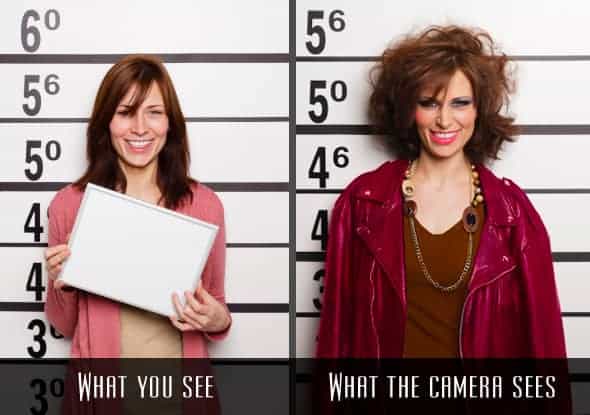In part 3 of this photography basics series, I taught you how to shoot in aperture priority and manual mode on your camera. In this installment, I'm going to teach you how to develop strong compositions in your photos.
Here's the thing about composition. There are a few basic rules of composition that you'll easily understand from this article, but you'll soon see as you get out and practice photography that finding a strong composition is a process of trial-and-error which you'll only learn with time and practice.
Simply put, composition means meticulously selecting what elements will appear in the picture, and then carefully placing those elements in the frame to create a creative, balanced, and interesting organization.
Composition Example
Ever had a driver's license photo taken? Or a mug shot? Hopefully not the mug shot, but we all know how horrendous those photos look. You can look your absolute best when you get to the driver's license place, but the photo always makes you look terrible. Why? Because they position you in the middle of the frame, and then make you square off your shoulders to the camera.From the photo below, you can see a humorous example of how photographers often envision a picture, and what the camera actually captures. It's funny, but unless you start paying attention to your composition, your pictures will always look like mugshots.

Driver's
license photos always look terrible because they pose you in the middle
of the photo and make you square off to the camera.
The Rule of Thirds
Imagine a tic-tac-toe board placed on your picture. The rule of thirds says that you should place whatever is most interesting or eye-catching in the photo on the intersection of the lines on the photo. That's really all there is to it!If you're shooting a portrait, decide which eye of the model is the focal point of the image. Usually, it's the eye closest to the camera. Then, adjust the framing of the picture until the eye is on the intersection of the imaginary tic-tac-toe board. Bingo! You followed the rule of thirds.
The same is true when shooting a landscape. In many or most landscapes, we like to include some of the foreground up close to the camera so as to give the sweeping landscape a sense of depth. So if there is an interesting rock or plant in the foreground, I'll place it on the bottom-right or bottom-left intersection of the frame. The same is true without a foreground element. You can place the horizon on the top or bottom third-line so that the horizon doesn't cut the picture in half.
I wrote a much more complete article about the rule of thirds, which you can check out as well.
The REAL Rule of Composition
Ask most amateur photographers in the world what composition is, and 90% of them would answer something like “The rule of thirds and leading lines.” Those are certainly important principles to follow, but I have found that these basic principles are far too simplistic.When I go out and shoot, I usually find that trial-and-error is the only way to get strong compositions. I loosely follow the rule of thirds and other compositional principles, but mostly it's about getting down low and shooting up, or finding something to stand on to shoot down, or moving my tripod an inch here an an inch there, and really playing around until everything in the picture looks balanced and solid. Don't over-analyze the rules.
In the next lesson of this Photography Basics series, I'm going to talk about proper focusing techniques.
No comments:
Post a Comment
Note: Only a member of this blog may post a comment.